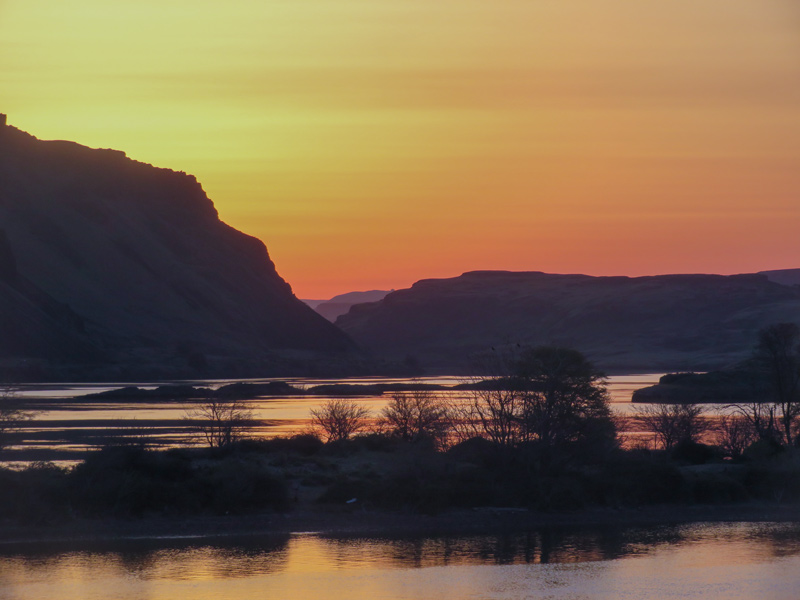Charbonneau‘s horse suffers an accident causing several items to fall off. The scattered booty is quickly hidden by watchful Wishram Indians. While Lewis retrieves the lost items, Clark climbs a hill to view the landscape. They continue by foot, horse, and dugout canoe reaching a spring near present John Day dam.
Charbonneau’s Horse Accident
Charbono’s [Charbonneau] horse threw his load, and taking fright at the saddle and robe which still adhered, ran at full speed down the hill, near the village he disengaged himself from the saddle and robe, an indian hid the robe in is lodge . . . .being now confident that the indians had taken it I sent the Indian woman on to request Capt. C. to halt the party and send back some of the men to my assistance being determined either to make the indians deliver the robe or birn their houses . . . . with this resolution I returned to their village which I had just reached as Labuish [Labiche] met me with the robe which he informed me he found in an Indian lodg his behind their baggage.
—Meriwether Lewis
Clark’s Mountain Views
dureing the time the front of the party was waiting for Cap Lewis, I assended a high hill from which I could plainly See the range of Mountains which runs South from Mt. Hood as far as I could See. I also discovered the top of Mt. Jefferson which is Covered with Snow and is S 10° W. Mt. Hood is S. 30° W. the range of mountains are Covered with timber and also Mt Hood to a sertain hite. The range of Mountains has Snow on them.
—William Clark
Regulated March
we now made the following regulations as to our future order of march (viz) that Capt. C. & myself should devide the men who were disencumbered by horses and march alternately each day the one in front and the other in rear. haveing divided the party agreeably to this arrangement, we proceeded on through an open plain country about 8 miles to a village of 6 houses of the Eneshur nation, here we observed our 2 canoes passing up on the opposite side; the wind being too high for them to pass the river they continued on.
—Meriwether Lewis
Weather Diary
State of weather at rise
Wind at rise
State of the weather at 4 P.M. Wind at 4 P.M. River fair N. W. fair W. fallen 1 in. night cold the day warm.
—Meriwether Lewis[1]To assist the reader of this web page, the date column is not presented, the “State of the Columbia River” columns have been merged, and some abbreviations have been spelled out.
Notes
| ↑1 | To assist the reader of this web page, the date column is not presented, the “State of the Columbia River” columns have been merged, and some abbreviations have been spelled out. |
|---|

